A few weeks ago I visited some antique stores. There was a doll shop nearby. Like many women, I've always had a special place in my heart for dolls--particularly the dolls I played with as a child. This store had every doll you could imagine.
It's overwhelming to see all the different dolls when you first walk in. Do you see one from your childhood?
My sister loved Kewpie dolls as a child.
As I was talking to the shop manager about quilts, she asked me if I'd like to see a Civil War quilt and doll. Have you ever heard of a Topsy-Turvy doll? When I saw a reproduction of this type of doll designed by Gail Wilson a few years ago, I fell in love with it. According to Gail's website, "it's a double-ended doll. There's a black doll and a white doll on either end as it is believed that early examples were originally created during Civil War times for the children of families who often played with their slave children counterparts and so both dolls were represented and probably sewn by black slave women."
[A side note: Gail designed some of the cloth dolls that appear in my first 2 books. I tried making one myself one day but it became apparent that I should stick to making quilts . . . .]
Aren't these lovely?
According to a website on historical folk dolls, these are considered controversial dolls by some with the authentic Topsy-Turvy doll featuring a black doll with a headscarf on one end and a white doll with an antebellum-style dress on the other end. The black doll could represent a maid, slave or servant and the white doll could represent the master's child or the mistress of the house.
"The original Topsy-Turvy dolls were created before the Civil War in the Southern United States on plantations where slavery was prominent. Arguments arise as to whether the dolls were made for the slave children to play with or whether they were made for the white children who lived in the plantation house.
"With one identity on one side and an opposite identity when flipped, slave children could have played with their prohibited black doll and then flipped it to the white doll when the master was around. Others believe that the double-ended dolls were made for white children with the black doll used as a maid for their other dolls."
According to Stephanie V. Siek, this doll "was a mirror of the African-American woman's life. She took care of white children, but had children of her own -- the white child is present when the black child is invisible, the black child is present when the white child is invisible."
Kimberly Wallace-Sanders thinks that Topsy-Turvy dolls were made by the black mammies to represent the two categories of children they took care of: the white master's children verses their own. After the Civil War, the white side of the doll was identified as that of a child, while the black doll suggested the black mammy caretaker.
It's interesting to think about the connection between dolls and quilts from the past--there's so much we really don't know. I'll tell you all about MY favorite collectible doll in a week or two. It's from the more recent past, but there's been a lot of controversy surrounding this one too!



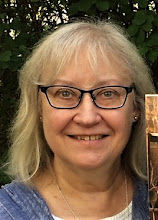
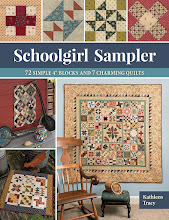


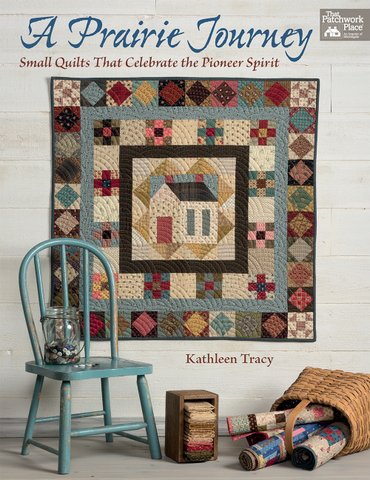
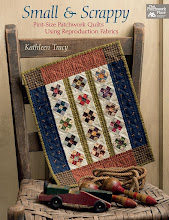
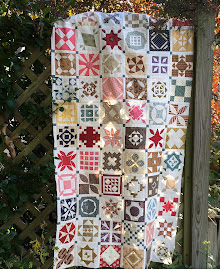

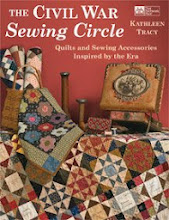
17 comments:
This was very interesting, thanks for sharing.
Hi Kathleen -
I've just recently found your blog and I so enjoyed the post today about the topsy turvy dolls. I have a couple of them and I love them. I've also seen similar upside down dolls with red riding hood on one side and the wolf on the other. I also collect (and have made some) soft black dolls. They just seem to touch my heart somehow. The information you shared was wonderful.
I love your 2 doll quilt books. I've been an avid doll (or small size) quilt maker for many years.
I've even made a little black mammy doll quilt.
Thanks again for a really fun post
Hi Kathleen,
I am new to your blog too and am really enjoying it. Dolls have held a special place in my heart as well as their quilts. I really enjoyed your post today, the Cival War has always interested me alot, especially the Underground Railroad and the stories of so many slaves escaping. If only that little topsy turvy doll could talk... the stories it could tell. Thanks for sharing.
I bought a pattern at the New England Quilt Museum last year for a Topsy Turvy Doll.
the pattern is by a company called THE RAGTIME DOLL COMPANY. They have a web site I just googled their name.
Your post has just made me go and get the pattern out of the draw. Must get on and make it.
I enjoyed your photos of the dolls and quilts.
Very interesting! I always think of the topsy-turvy dolls as representing different characters in the same story, like Little Red Riding Hood on one side and the Wolf on the other. I hadn't heard of this pre-civil war origin, nor of white/black dolls. Very interesting, indeed.
Quite educational...I just wish these dolls could talk to us and tell us their story. Now, I am intrigued and curious to hear what your favorite doll is! Kristy in Ohio
Great post. I remember this type of doll, but the history is really interesting. Thanks for sharing.
Thanks so much for the interesting story! and ... could you be talking about Barbie?? I have one dressed as a quilter with a small hoop in her hand hihi must make a post about her sometime! Happy sewing, Daniëlle
There were also many FPCs, Free Persons of Color, prior to the Civil War. We had dolls, too.
Excellent use of Gail's Feedsack Doll on the Strippy Triangle pattern. Gail's been cutting back on her business lately but she still has that site full of wonderful creations. Go shopping, folks.
Hi, I live in Australia but thanks to Ebay have been able to collect vintage 8" Madame Alexander and Vogue Ginny dolls which I noticed are in the photo of the Doll Shop. I enjoyed your post very much. Thanks very much .. Sharron
Really enjoyed reading this post, and had a good laugh looking for any dolls I grew up with in the photo. I'd never heard of the topsy-turvy doll, but my grandmother made a red riding hood doll with the wolf on the other end to play with when we visited her. At her estate sale that doll sold for a fortune! Rats! I wish I'd seen your post earlier.
Funny, I'd never heard of the Red Riding Hood/Wolf doll until now. Seems like everyone else has!
HI Kathy, loved reading about the topsy-turvy doll. My daughter had one a few years ago but it wasn't red riding hood, instead it was Cinderella, one side as the poor downtrodden girl and the other as the fairytale princess.
Love reading your blog, Sue....
I enjoyed seeing the pictures and reading all the information on the dolls. I saw Topsy Turvy dolls when I was a child but never had one myself. I recently bought one of your books and I'm looking forward to making some of these quilts. Where is this doll museum and what is it called?
Thanks so much.
Etty in Israel
Thanks, Etty. It was a shop that sells antique dolls, although it was almost like a museum.
I found your blog post about these historical dolls to be very informative. I've been wanting to know more about these interesting flip dolls. I inherited 2 topsy turvy style dolls in the last year. I am thinking my dolls may be from the 1940's, but I'm not sure.
Post a Comment